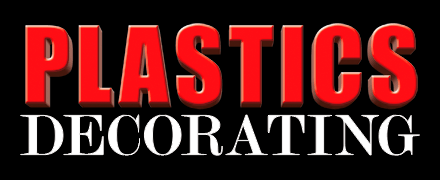 |
LATEST ISSUE Profile Show Preview Ask the Expert Technology Association Assembly Management CALENDAR February 12-14 March 19 March 20-21 April 8 April 22-24 June 18-20 June 18-20
For Email Marketing you can trust
Copyright 2010 Peterson Publications, Inc.
|
Powder Coating - Recent Advancements for Industrial Plastics Applications by Scott Sabreen, The Sabreen Group, Inc. Technology Feature October-November2007 The growth of powder coatings has been dramatic during the last decade with new applications continually being developed, including plastics. Innovations in processes and materials have opened previously unimaginable opportunities. Although environmental advantages have been a strong motivating factor for the conversion of liquid coatings to powder coatings, the bottom line for many companies is increased profitability. Leading manufacturers of powder coating technology foresee untapped potential in plastics applications including automotive, appliances, and many more. The technology for coating products with dry powder rather than conventional liquids has been used since the 1950s. The powder used for the process is a mixture of finely ground particles of pigment, polymeric resin, and fillers. The powder can be sprayed electrostatically onto the substrate surface, or the substrate (product) can be dipped into a fluidized bed of suspended powder. During post heat curing, the particles flow and fuse into a strong adhering coating. The result is a high quality cosmetic finish with excellent durability. Polyester TGIC coatings utilize the epoxy functional crosslinker TGIC (triglycidyl isocyanurate). Use of this low molecular weight, multifunctional crosslinker enables polyester TGIC formulations to contain 90 percent or greater resin within the binder system. Weathering of polyester TGIC powders is comparable to polyester urethane coatings. Polyester TGIC coatings typically offer faster or lower temperature curing than polyurethanes. Unlike urethane coatings, TGICs maintain excellent mechanical properties at film builds above three mils with no outgassing. Additionally, TGIC coatings provide superior edge coverage when sharp edges are present. The powder coating process involves finely ground particles of pigment and resin that are sprayed onto a substrate. Once the particles are applied, the part is cured, which causes a chemical reaction that bonds the powder to the work piece (substrate). The result is a uniform, high quality, and durable finish. This finish is more attractive than conventional methods due to the elimination of runs, drips, and uneven drying associated with liquid paint. The powder that does not adhere to the part is recovered and reused, generating a maximum efficiency of 98 percent material usage. This compares with a 30 to 80 percent utilization rate for most other spray coating processes. The most common technique used for powder coating is the electrostatic spray application process. The process involves a feed hopper and a spray gun, which incorporates the electrostatic charge of the particles. There are two types of spray guns, a corona and a tribo charged. The corona gun uses a voltage supply to charge the powder particles, while the tribo gun uses friction generated within the gun barrel. The corona technique negatively charges the particles. This generates electric fields, which causes uneven coating. The tribo gun positively charges the particles. As a result, there is no uneven coating, making it the optimal method for electrostatic spray application. Initially, the powder particles are stored in a large fluidized bed to keep them continuously suspended. The suspension of the particles prevents clogging in the pick-up tube that leads to the powder pump. The pump pulls the particles from the fluidized bed into the delivery tube. A second burst of air accelerates the particles, increasing the number of collisions with the Teflon walls and positively charging them (coatings). The tribostatic process is shown in Figure 2 (Tribostatic). The positively charged particles are sprayed out of the gun tip and adhered to the grounded work piece. This process can be seen in Figure 1 (Coatings). The work piece (substrate) is then placed in a furnace and cured at 300º F for 20 minutes (TGIC). The curing process causes a chemical reaction, bonding the powder coating and the substrate.
Of significant importance to plastics applications, UV powders with curing temperatures as low as 250°F have emerged. Such advancements now make it possible to apply powder coatings to some of the most widely used plastics, as either a secondary finishing process or during primary injection molding. For "In-mold" powder coating, the powder coating material is sprayed onto a heated mold cavity before the molding cycle begins. During the molding operation, the powder coating chemically bonds to the molding compound and produces a coated product that is chip- and impact-proof. Not unlike other technologies, powder coating has inherent advantages and disadvantages.
Recent breakthroughs in powder coating technology have approached the mar performance usually associated with porcelain enamels, as measured by commonly used industry tests. This provides significant value to customers. The final properties of the powder coatings often are superior to liquid coating systems. The reasons for the fast growth of this technology is that powder coatings maximize production, cut costs, improve efficiencies, and offer maximum compliance with increasingly stringent environmental regulations. The future for broad scope powder coating on plastics is bright. References: SpecialChem – Coatings & Inks. Coatings.de. 26 April 2004. Vincentz Network. 08 April 2004. What Are TGIC Powder Coatings? 26 April 2004. Caswell. 15 April 2004. Tribostatic Powder Spray Systems. 26 April 2004. Nordson Corporation. Scott R. Sabreen is founder and president of The Sabreen Group, Inc. (TSG). TSG is a global engineering company specializing in secondary plastics manufacturing processes – surface pretreatments, bonding, decorating and finishing, laser marking, and product security. For more information, call toll free (888) SABREEN or visit www.sabreen.com and www.plasticslasermarking.com. |
|||||||||||||||||||||||||||||||||||||||||||




